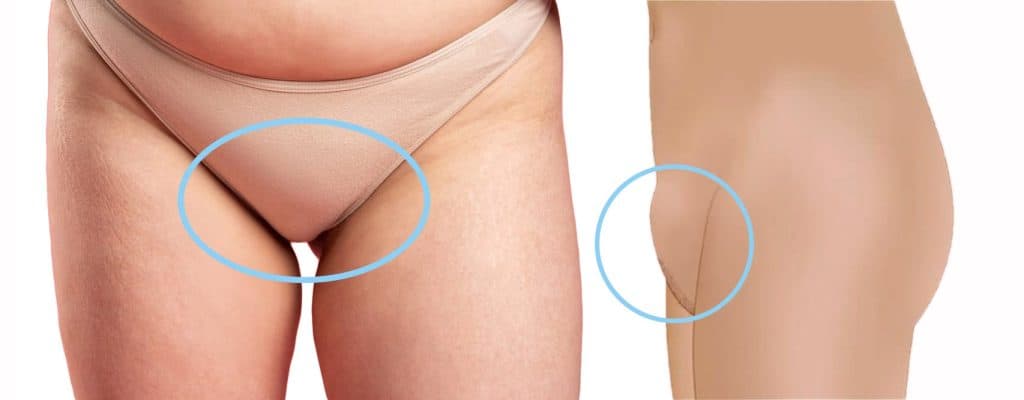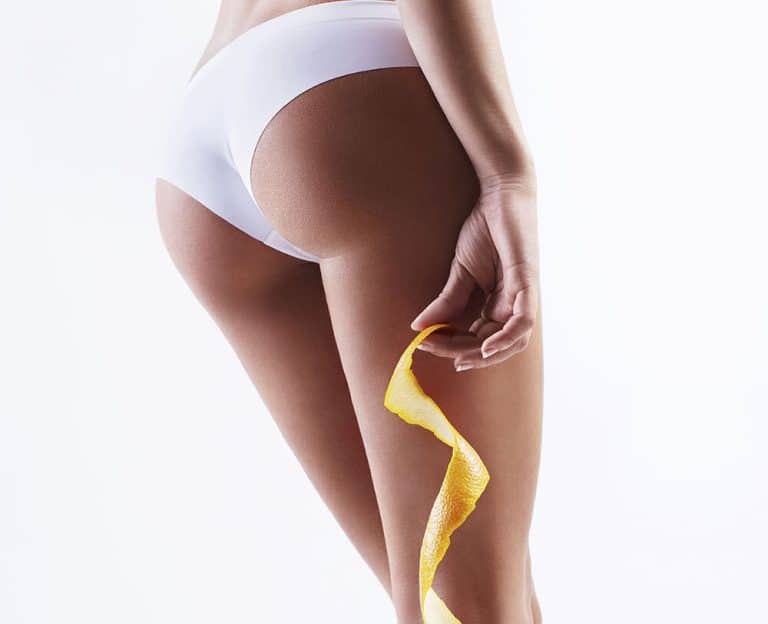Liposuction for FUPA has gained popularity in recent years. This procedure targets stubborn fat deposits in the lower abdomen, often referred to as a “fat upper pubic area,” and is a common consideration for liposuction surgery and tummy tucks in addressing fatty areas for improved abdominal aesthetic. Many people struggle with this area despite diet and exercise. Liposuction offers a solution for fat tissue, helping individuals achieve a flatter stomach by removing fat deposits from the pelvis fat and fatty upper pubic area, leading to improved confidence.
Historically, liposuction dates back to the late 1970s and has evolved significantly for patient men since then. Today, it is safer and more effective than ever. The procedure can be tailored to meet individual patient needs, making pubic liposuction, abdomen liposuction, and fupa lipo accessible for many. Understanding the benefits and risks of the cosmetic liposuction procedure, including abdomen liposuction and fupa lipo, is crucial for anyone considering this option.
Key Takeaways
- FUPA, or fat upper pubic area, is a common concern for many people, including men, and can affect self-esteem. Understanding its characteristics can help you make informed decisions about treatment options.
- Liposuction can be an effective method for men to reduce FUPA fat. If you’re considering this fupa lipo procedure, research thoroughly to understand how it works for men and what results to expect.
- Not everyone is a good candidate for FUPA liposuction. Consult with a qualified surgeon to evaluate your health and goals for fupa lipo before proceeding, especially for men.
- Familiarize yourself with the steps in the liposuction procedure to alleviate any anxiety. Knowing what to expect can help you feel more prepared.
- Recovery from FUPA liposuction varies by individual. Follow your surgeon’s post-operative care instructions closely for the best results.
- Costs for FUPA liposuction can vary widely based on location and surgeon expertise. Budget accordingly and consider financing options if necessary.
What is a FUPA
FUPA stands for “Fat Upper Pubic Area.” This term describes excess fatty tissue located in the lower abdomen and pelvic region. Many people notice this area when they experience weight gain or after pregnancy.
The fupa fat can be stubborn and resistant to diet and exercise. It often remains even after significant weight loss. This can lead to frustration for those trying to achieve their desired body shape.
The term “FUPA” gained popularity in 2018 when singer Beyoncé used it in a public statement. She referred to her own body image and how society views women’s bodies. This mention helped many feel more comfortable discussing their experiences with body image issues.
Individuals may develop a FUPA due to various factors. Genetics play a significant role in where the body stores fat. Hormonal changes, aging, and lifestyle choices also contribute. Stress and lack of physical activity can exacerbate the issue.
e people seek liposuction for FUPA as a solution. Liposuction is a surgical procedure that removes excess fat from specific areas of the body. Surgeons use a suction technique to eliminate unwanted fat deposits. This can create a smoother, more contoured appearance.
Before considering liposuction, individuals should consult with a qualified surgeon. They will evaluate overall health and discuss expectations. It’s essential to have realistic goals about what liposuction can achieve.
Recovery from liposuction varies by individual. Patients may experience swelling, bruising, and discomfort after the procedure. Most people return to normal activities within a few weeks but should follow post-operative care instructions closely.
Understanding the fupa area helps individuals make informed decisions about their bodies. Many find comfort in knowing they are not alone in their struggles with this issue. The rise of social media has fostered discussions around body positivity and acceptance.
Education about body types is crucial in today’s society. Knowledge empowers individuals to embrace their unique shapes while seeking solutions that work for them.
Characteristics of FUPA
Development Factors
Both men and women can develop a prominent FUPA. Aging is one significant factor. As people age, skin loses elasticity. This change can lead to fat accumulation in the lower abdominal area. Weight gain also plays a critical role. Extra pounds often settle around the stomach. Genetics can contribute too. Some individuals inherit a tendency to store fat in this region.
Resistance to Efforts
FUPA varies in size and shape among individuals. Many find it resistant to diet and exercise efforts. Even with a healthy lifestyle, some may struggle to lose this fat. Traditional weight loss methods often do not target this area effectively. This resistance can be frustrating for those trying to achieve their fitness goals.
Impact on Confidence
Having a FUPA can affect body confidence. Many individuals feel self-conscious about their appearance. This feeling may lead to avoiding certain clothing styles. Tight-fitting clothes become less appealing due to concerns over how they fit. Instead, some opt for looser clothing to hide their FUPA.
This situation creates a cycle of discomfort and dissatisfaction. The emotional impact can be significant. People may feel less attractive or undesirable because of their body shape.
Social Perceptions
iety often promotes ideal body images that don’t include FUPAs. These perceptions can deepen insecurities for those affected. Media representation often overlooks diverse body types. This lack of visibility can make individuals feel isolated in their experiences.
Seeking Solutions
Many look for solutions to manage or reduce the appearance of FUPA. Some might try various diets or workout routines. Others consider cosmetic procedures like liposuction as an option.
Liposuction specifically targets stubborn fat areas, including the lower abdomen. It offers a potential solution for those frustrated by traditional methods.
Liposuction for FUPA
Target Area
FUPA liposuction focuses on the fat upper pubic area. This procedure specifically targets excess fat in the pubic region. Many patients struggle with this area despite diet and exercise. The buildup of fat can affect self-esteem and body image.
Procedure Details
The fupa liposuction procedure uses local anesthesia. This choice minimizes discomfort during the surgery. Surgeons employ minimally invasive techniques, which reduce recovery time. Small incisions are made to access the fatty tissue. These incisions are typically placed discreetly to minimize scarring.
Patient Experience
Fupa liposuction patients often report positive experiences. They appreciate the quick recovery and minimal pain associated with the procedure. Many patients feel more confident after seeing their results. The goal of the procedure is to achieve a flatter stomach when other methods fail. Some choose fupa treatments as a last resort after trying various diets.
Results
Fupa liposuction results can be significant. Patients may notice a marked difference in their appearance almost immediately after surgery. Swelling may occur but usually subsides within weeks. Final results can take several months to fully develop as the body heals.
Comparison to Other Treatments
Fupa surgery differs from traditional weight loss methods. While diet and exercise can help, they may not target this specific area effectively. Liposuction provides a direct approach to remove stubborn fat deposits. This makes it an appealing option for many individuals looking for fupa reduction.
Risks and Considerations
All surgeries carry risks, including fupa lipo. Patients should discuss potential complications with their surgeon before proceeding. Common risks include infection, scarring, or uneven results. Understanding these risks helps patients make informed decisions about their bodies.
Alternatives
Several alternatives exist for those considering fupa treatment. These include non-surgical options like CoolSculpting or radiofrequency therapy. While these methods may be less invasive, they often yield less dramatic results compared to liposuction.
Good Candidate for FUPA Liposuction
Ideal Candidates
Individuals with localized fat deposits in the pubic area are often considered for FUPA liposuction. This condition leads to a fatty pad that can be resistant to diet and exercise. Many people notice this unwanted body fat after weight changes or pregnancy. Those who struggle with abdominal fat may find liposuction beneficial.
Health Considerations
Candidates should be in good overall health before undergoing the procedure. A thorough medical evaluation is necessary to ensure safety. Conditions like diabetes or heart disease can complicate surgery. It’s vital to discuss any health issues with a doctor. Only those without serious health risks should consider this option.
Realistic Expectations
Realistic expectations about results are crucial for candidates. Liposuction can help remove excess fat, leading to a contoured stomach. However, it is not a weight-loss solution. Patients should understand that some swelling may occur post-surgery. The final results often take time to appear as the body heals.
Age and Lifestyle Factors
Age and lifestyle also play roles in determining candidacy. Younger individuals may recover faster than older patients. Active lifestyles support better healing and outcomes. Those who smoke or have unhealthy habits might face complications during recovery.
Consultation Process
The consultation process is essential for potential candidates. Doctors evaluate body areas where fatty tissue exists. They assess skin elasticity and overall body composition. This helps determine if the procedure is suitable for the individual’s needs.
Emotional Readiness
Emotional readiness is just as important as physical health. Candidates should feel prepared for changes in their appearance. Support from friends or family can make a difference during recovery.
Post-Procedure Care
Post-procedure care is critical for achieving desired results. Following all aftercare instructions ensures proper healing. Patients must avoid strenuous activities for several weeks after surgery.
Cost Considerations
Cost is another factor to consider when thinking about FUPA liposuction. Prices vary based on location and surgeon experience. Many insurance plans do not cover cosmetic procedures, so budgeting is essential.
FUPA liposuction can provide many benefits, such as improved confidence and comfort in clothing. It’s important to weigh these factors carefully before deciding on the procedure.
Steps in the Procedure
Anesthesia Use
Local anesthesia plays a crucial role in the liposuction procedure for FUPA. It numbs the area, ensuring that patients feel minimal discomfort during treatment. This type of anesthesia allows patients to remain awake while the procedure occurs. The doctor may also provide sedation for added comfort.
This combination helps manage pain effectively. Patients often report feeling pressure but no sharp pain. The use of local anesthesia makes the process smoother and less intimidating.
Incision Creation
Small incisions are made in the groin region to begin the procedure. These incisions are typically about 3 to 5 millimeters long. Their size allows for minimal scarring post-operation. The location is discreet, which helps with recovery and aesthetics.
Surgeons carefully place these incisions to access the fat beneath the skin. This approach is vital for effective fat removal without damaging surrounding tissues. The precision of these incisions contributes to better outcomes for patients.
Fat Removal Process
After making the incisions, the surgeon begins the fat removal process. Excess fat in the FUPA area is liquefied using a specialized solution. This solution usually contains saline, lidocaine, and epinephrine. It helps break down fat cells while minimizing bleeding.
Once liquefied, a small tube called a cannula is inserted through the incisions. The surgeon gently moves the cannula back and forth to suction out the liquefied fat. This method reduces trauma to surrounding tissues and promotes quicker healing.
The amount of fat removed varies by patient goals and needs. Surgeons often aim for a balanced look, removing enough fat to enhance body contours without overdoing it.
Recovery Considerations
Post-procedure, patients receive specific instructions for recovery. They may need to wear a compression garment to support healing. Pain medication might be prescribed to manage discomfort after surgery.
Dietary adjustments can also play a role in recovery. Patients are encouraged to maintain a healthy diet to support their goals. Following these guidelines can lead to better results and satisfaction with the treatment.
Financing options are available for those concerned about cost. Many clinics offer payment plans or financing solutions to make procedures more accessible.
Monsplasty Surgery Option
Definition
Monsplasty is a type of cosmetic surgery. It focuses on removing excess skin and fat from the mons pubis area. This area is located above the pubic bone. People often seek this procedure to improve their body contour. It helps those who have sagging skin or fat in this region.
Comparison with Liposuction
Liposuction targets fat removal but may not address loose skin effectively. Monsplasty is more suitable for individuals with significant skin laxity. Those who have lost a lot of weight might find monsplasty beneficial. The procedure removes both fat and excess skin, providing a tighter appearance.
Liposuction can be performed alone, but it has limitations. If the skin lacks elasticity, liposuction may not yield desired results. In contrast, monsplasty directly addresses issues of skin tightness.
Combination Procedures
Combining monsplasty with liposuction can enhance overall results. Surgeons often recommend this approach for optimal outcomes. Liposuction can remove stubborn fat while monsplasty tightens the skin. This combination can lead to a more aesthetically pleasing result.
Patients should discuss their goals with a qualified surgeon before making decisions. The surgeon will evaluate individual needs and suggest the best option.
Recovery Process
Recovery from monsplasty involves managing pain and discomfort. Surgeons typically prescribe pain medication to ease recovery. Patients may experience swelling and bruising after the surgery. These symptoms usually subside within a few weeks.
Scarring is another consideration for patients. While surgeons strive to minimize visible scars, some may still occur. Proper aftercare can help reduce the appearance of scars over time.
Time Commitment
The recovery time for monsplasty varies among individuals. Most patients return to normal activities within two to four weeks. However, full recovery may take longer depending on personal factors.
Surgeons provide detailed aftercare instructions to facilitate healing. Following these guidelines is crucial for achieving the best results.
Patients must also attend follow-up appointments to monitor progress. These visits allow the surgeon to assess healing and address any concerns.

Recovery Process Details
Immediate Actions
Patients can walk right after the liposuction procedure. This is an important step in the recovery process. Movement helps blood circulation and reduces the risk of complications. Light activities can be resumed quickly, usually within a few days. However, strenuous exercise or heavy lifting should wait until cleared by the surgeon.
Compression Garment
Wearing a compression garment is crucial for recovery. Patients need to wear it 24 hours a day for 2 weeks. This garment helps reduce swelling and supports the healing tissues. It also helps shape the area treated during liposuction. Following this guideline can lead to better results.
Common Symptoms
Mild swelling and bruising are common after the procedure. These symptoms typically appear shortly after surgery. They may last for several weeks but are temporary. Understanding this can ease concerns about appearance during recovery. Most patients notice significant improvement in these symptoms over time.
Financial Considerations
Many patients consider financing options for their procedure. CareCredit is one option that offers payment plans for medical expenses. This can make liposuction more accessible for those who might struggle with upfront costs. Discussing financial options with a healthcare provider can provide clarity on what is available.
Follow-Up Appointments
Follow-up appointments play a key role in recovery. Surgeons will monitor progress and address any concerns during these visits. Patients should attend all scheduled follow-ups to ensure proper healing. Regular check-ins help track recovery milestones and adjust care if necessary.
Long-Term Care
After the initial recovery period, maintaining a healthy lifestyle is essential. A balanced diet and regular exercise can enhance results from liposuction. Staying active prevents weight gain and helps maintain body contours achieved through surgery.
Emotional Support
Recovery isn’t just physical; emotional support matters too. Friends and family can provide encouragement during this time. Some patients may benefit from talking to others who have undergone similar procedures. Sharing experiences can help ease anxiety and build confidence in one’s appearance.
Cost of FUPA Liposuction
Price Range
FUPA liposuction costs between $3,900 and $4,900. This price varies based on factors like the surgeon’s experience and location. Many clinics offer different pricing structures, so it’s essential to check multiple sources.
Costs can also depend on the complexity of the procedure. For example, if patients combine FUPA liposuction with lower abdomen liposuction, prices increase. In this case, the total cost ranges from $4,900 to $5,900. This combination often provides better results for those seeking a flatter stomach.
What’s Included
Liposuction pricing typically covers more than just the surgery itself. Patients should expect that the quoted price includes several important items. These may include pre-operative lab tests, necessary antibiotics, and a compression garment.
Post-operative supplies are also part of the package. Follow-up visits with the surgeon are usually included as well. This comprehensive approach ensures that patients receive proper care throughout their recovery process.
Additional Costs
Surgeons may charge extra for specific services or products not included in the base price. For instance, anesthesia fees can be an additional expense. Some patients may also desire advanced techniques or technologies that could raise the overall cost.
Traveling for surgery can add more expenses too. Patients might need to consider accommodation and transportation costs if they choose a clinic far from home. It’s wise to factor these into the overall budget.
Financing Options
Many clinics offer financing plans to make procedures more affordable. Patients can explore options such as monthly payment plans or medical credit cards. These choices can help manage costs while still getting the desired treatment.
Insurance coverage is generally limited for cosmetic procedures like liposuction. However, some policies might cover aspects related to health issues caused by excess weight. Consulting with insurance providers before scheduling surgery is advisable.
Closing Thoughts
Understanding FUPA and the options available for its treatment empowers you to make informed decisions. Liposuction can be a viable solution if you’re a good candidate, offering benefits like improved body contour and boosted confidence. You’ve learned about the procedure, recovery, and costs, which are vital for planning your journey.
If you’re considering FUPA liposuction, consult with a qualified professional. They can provide personalized advice tailored to your needs. Don’t hesitate to take the next step towards the body you desire. Your transformation awaits!
Frequently Asked Questions
What is a FUPA?
A FUPA, or “fat upper pubic area,” refers to excess fat that accumulates above the pubic area. It can occur due to weight gain, genetics, or hormonal changes.
Is liposuction safe for FUPA?
Yes, liposuction for FUPA is generally safe when performed by a qualified plastic surgeon. It’s essential to discuss your medical history and expectations during the consultation.
How long does FUPA liposuction take?
The procedure typically takes 1 to 3 hours, depending on the amount of fat being removed and the technique used.
What should I expect during recovery?
Recovery from FUPA liposuction usually involves swelling and bruising. Most patients return to normal activities within 1 to 2 weeks, but full results may take several months.
Are there non-surgical options for FUPA reduction?
Yes, non-surgical options like CoolSculpting and radiofrequency treatments can help reduce FUPA. However, results vary and may not be as dramatic as liposuction.
How much does FUPA liposuction cost?
The cost of FUPA liposuction varies widely based on location and surgeon experience, typically ranging from $3,000 to $8,000. Consult with your surgeon for an accurate estimate.
Who is a good candidate for FUPA liposuction?
Good candidates are generally at or near their ideal weight, have elastic skin, and seek targeted fat removal. A consultation will help determine suitability for the procedure.





